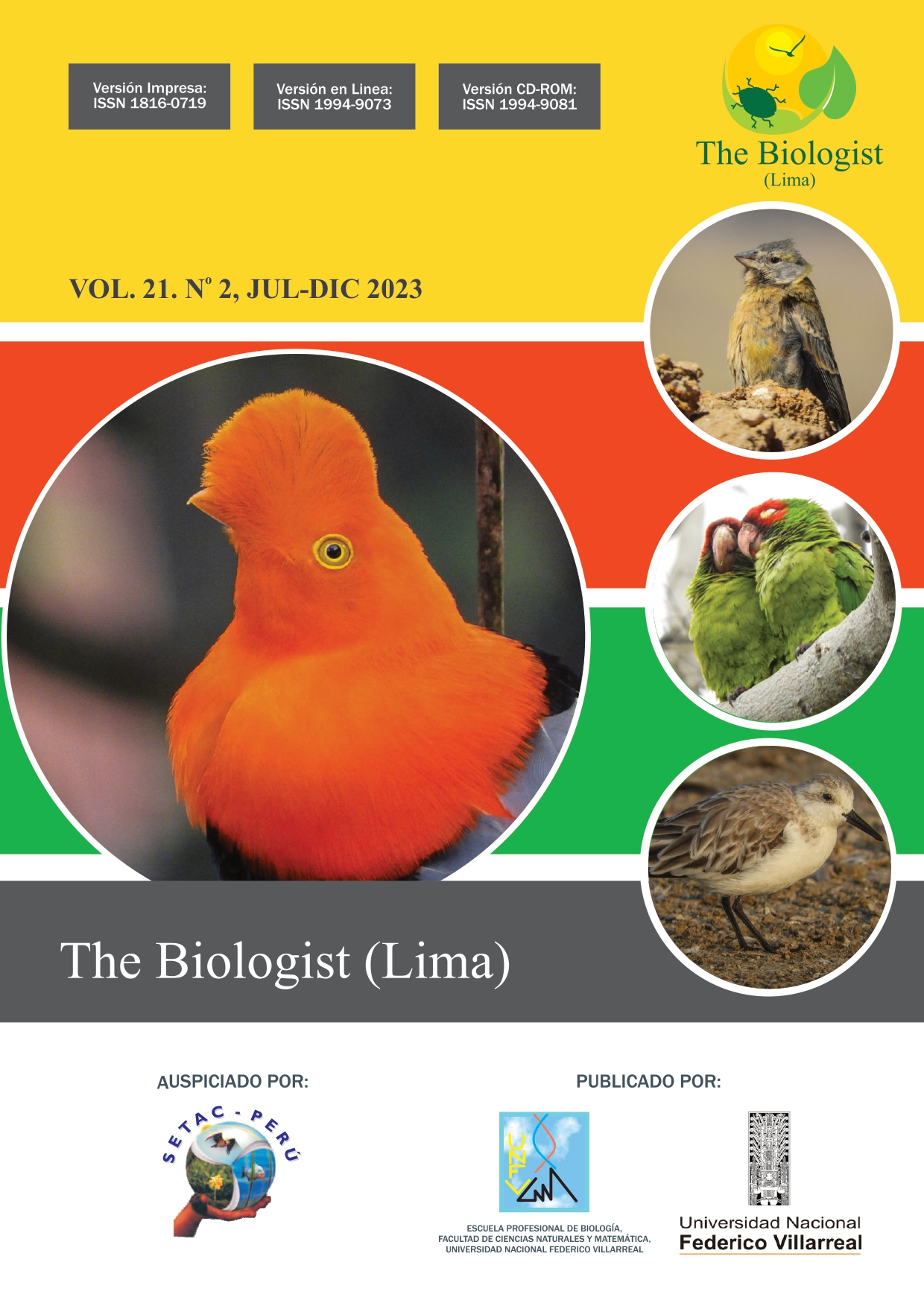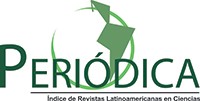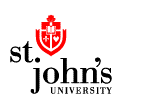Effect in the reproduction of north-center Peruvian anchovy Engraulis ringens (Jenyns, 1842) stock from Peru during La Niña Event 2017-2018 categorized by reproductive index anomalies
DOI:
https://doi.org/10.24039/rtb20232121606Keywords:
gonadosomatic index, La Niña, Peruvian anchovy, reproductive index anomalies, spawning fractionAbstract
The Peruvian anchovy is a pelagic fish which is distributed in Humboldt Current System, divided in 3 stocks, being the north-center stock of Peru the most important for its high biomass values. The reproductive behavior of Peruvian anchovy was widely studied and could be affected by oceanographic changes. The aim of this work was to evaluate the reproductive strategy and the effect of La Niña 2017-2018 over the reproduction of Peruvian anchovy trough the study of the reproductive index anomalies. The time series of the reproductive index, gonadosomatic index and spawning fraction during 2017 and 2018, were given by IMARPE. The estimation and categorization of the reproductive index anomalies were done as of the methodology of Cuba et al. The results showed that in the first 3 months of the event the reproductive activity had positive anomalies with moderate effect, then positive anomalies without effect were registered. The spawning activity had a positive moderate anomaly during February, month when the anchovy presents their second important reproductive moment.
Downloads
References
Ayala, M., Albrecht-Ruiz, M., Sala, A., & Paredes, J. (2002) Fat content of Peruvian anchovy (Engraulis ringens) after El Niño Phenomenon (1998-1999). Journal of food composition and analysis, 15, 627-631.
Bouchon-Corrales, M., & Peña-Tercero, C. (2008). Impactos de los eventos La Niña en la pesquería peruana. Boletín Instituto del Mar del Perú, 35(3), 193-198.
Buitrón, B., Perea, A., Mori, J., Sánchez, J., Roque, C. (2011). Protocolo para estudios sobre el proceso reproductivo de peces pelágicos y demersales. Boletin Instituto del Mar Perú. 38, 373-384.
Cuba, A., Sánchez, J., Mori, J., & Chávez, G. (2019). Anomalías de los índices reproductivos fracción desovante e índice gonadosomático de anchoveta peruana Engraulis ringens (Jenyns, 1842) del stock norte-centro del Perú y su relación con El Niño Costero 2017.The Biologist (Lima), 17(2), 253-261.
Cubillos, L. A., Ruiz, P., Claramunt, G., Gacitúa, S., Núñez, S., Castro, L. R., Riquelme, K., Alarcon, C., Oyarzun, C., & Sepúlveda, A. (2007). Spawning, daily egg production, and spawning stock biomass estimation for common sardine (Strangomera bentincki) and anchovy (Engraulis ringens) off central southern Chile in 2002. Fisheries Research, 86(2-3), 228-240.
Díaz, E. (2017). Impacto de diferentes estrategias de explotación sobre el estado inmediato del stock norte – centro de la anchoveta peruana (Engraulis ringens). Tesis (Magister en Recursos Acuáticos). Universidad Nacional Mayor de San Marcos. Escuela de Posgrado. Facultad de Ciencias Biológicas.
Einarsson, H., Rojas de Mendiola, B., & Santander, H. (1966). El desove de peces en aguas peruanas durante 1961–1964. Memoria del Primer Seminario Latinoamericano del Océano Pacífico Oriental, Lima.
ENFEN. (2012). Definición operacional de los eventos El Niño y La Niña y sus magnitudes en la costa del Perú. https://www.dhn.mil.pe/Archivos/Oceanografia/ENFEN/nota_tecnica/Definicion%20Operacional%20ENFEN_09abr12.pdf
ENFEN. (2022). Eventos El Niño y La Niña costeros. Subdirección de Ciencias de la Atmosfera e Hidrosfera. http://met.igp.gob.pe/elnino/lista_eventos.html
ENFEN. (2023). Eventos El Niño y La Niña costeros. Subdirección de Ciencias de la Atmosfera e Hidrosfera. http://met.igp.gob.pe/elnino/lista_eventos.html
Global Fishing Watch. (2019). La pesquería comercial más grande del mundo ahora disponible en la plataforma Global Fishing Watch. https://globalfishingwatch.org/es/transparencia/la-pesqueria-comercial-mas-grande-del-mundo-ahora-disponible-en-la-plataforma-del-global-fishing-watch/
IMARPE. (2023) Reporte de indicadores reproductivos de anchoveta peruana Engraulis ringens. N°06-2023. LBR/AFIRNP/DGIRP.
IMARPE. (2018) Reporte de indicadores reproductivos de anchoveta peruana Engraulis ringens. N°06-2018. LBR/AFIRNP/DGIRP.
Maturana, J., Bello, M., & Manley, M. (2004). Antecedentes históricos y descripción del fenómeno El Niño, Oscilación del Sur. El Niño-La Niña, 2000. SHOA—Servicio Hidrográfico y Oceanográfico de la Armada de Chile, Departamento de Oceanografía: Valparaíso, Chile, pp. 13-27.
Mori, J., Buitrón, B., Perea, A., Peña, C., & Espinoza, C. (2011). Variabilidad anual en la estrategia reproductiva en la anchoveta peruana en la región norte-centro del litoral del Perú. Ciencias Marinas 37(4B), 513-525.
Perea, Á., Buitrón, B., Mori, J., Roque, C., & Sánchez, J. (2015). Anomalías de los índices reproductivos de anchoveta Engraulis ringens en relación al ambiente. Boletín Trimestral Oceanográfico, 1, 25-26.
Vazzoler, A.E. (1996). Biologia da reproducao de peixes teleósteos: teoría e prática. Eduem. 169 pp.
Downloads
Published
How to Cite
Issue
Section
License

This work is licensed under a Creative Commons Attribution-NonCommercial-NoDerivatives 4.0 International License.
Objeto: El AUTOR-CEDENTE transfiere de manera TOTAL Y SIN LIMITACIÓN alguna al CESIONARIO (Revista The Biologist (Lima)) los derechos patrimoniales que le corresponden sobre sus obras por el tiempo que establezca la ley internacional. En virtud de lo anterior, se entiende que el CESIONARIO adquiere el derecho de reproducción en todas sus modalidades, incluso para inclusión audiovisual; el derecho de transformación o adaptación, comunicación pública, traducción, distribución y, en general, cualquier tipo de explotación que de las obras se pueda realizar por cualquier medio conocido o por conocer en el territorio nacional o internacional.
Remuneración: La cesión de los derechos patrimoniales de autor que mediante este contrato se hace será a título gratuito.
Condiciones y legitimidad de los derechos: El AUTOR-CEDENTE garantiza que es propietario integral de los derechos de explotación de la(s) obra(s) y en consecuencia garantiza que puede contratar y transferir los derechos aquí cedidos sin ningún tipo de limitación por no tener ningún tipo de gravamen, limitación o disposición. En todo caso, responderá por cualquier reclamo que en materia de derecho de autor se pueda presentar, exonerando de cualquier responsabilidad al CESIONARIO.
Licencia de acceso abierto: El AUTOR-CEDENTE autoriza que manuscrito publicado en la Revista Científica The Biologist (Lima) (versión Impresa ISSN 1816-0719, versión en línea ISSN 1994-9073) permanece disponible para su consulta pública en el sitio web http://revistas.unfv.edu.pe/index.php/rtb/index y en los diferentes sistemas de indexación y bases de datos en las que la revista tiene visibilidad, bajo la licencia Creative Commons, en la modalidad Reconocimiento-No comercial- Sin Trabajos derivados –aprobada en Perú, y por lo tanto son de acceso abierto. De ahí que los autores dan, sin derecho a retribución económica, a la Escuela Profesional de Biología, Facultad de Ciencias Naturales y Matemática de la Universidad Nacional Federico Villarreal (EPB - FCCNM - UNFV), los derechos de autor para la edición y reproducción a través de diferentes medios de difusión.









































